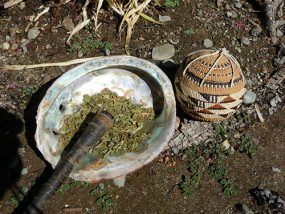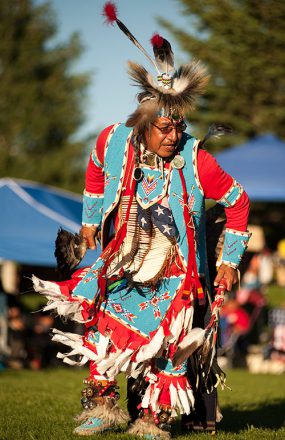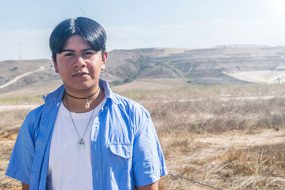Unfair and Unjust Practices and Conditions Harm American Indian and Alaska Native People and Drive Health Disparities
Some historical policies and practices have led to worse mental and physical health among American Indian and Alaska Native (AI/AN) people. For example:
- The Indian Removal Act of 1830 and the Dawes Act of 1887 ordered AI/AN people from the lands they had been living on. This removal by force contributed to the loss of entire tribes, their culture, traditions, and languages. AI/AN people are faced with daily reminders of these losses, and many still experience grief from this historical trauma. This helps to explain why AI/AN people have some of the highest rates of poor mental health among U.S. population groups.
- From the late 1880s until the passage of the Indian Religious Freedom Act of 1978, U.S. laws banned many AI/AN cultural practices, including some traditional uses of tobacco. To keep their cultural practices alive, some groups began to substitute commercial cigarettes for traditionally grown tobacco at ceremonies.
- As outlined in certain U.S. legislative acts (e.g. Snyder Act, Transfer Act) the Indian Health Service is responsible for providing health services to AI/AN people. Resources needed to support health services have not kept up with rising prices, and more people now need to use these services.18 This makes AI/AN health disparities worse.18

Tobacco prepared for traditional use. Photo courtesy Kathleen Jack, CRIHB.
There are also current reasons—like the ones explored below—that help explain why commercial tobacco* harms the health of AI/AN people.

Tobacco companies promote their products more heavily to people in racial/ethnic minority groups, including AI/AN people.19
In order to target AI/AN people, the tobacco industry uses many strategies to influence people and make it seem like they are doing good for the community. Some examples include:
- Giving financial support to cultural events like pow wows and rodeos;19
- Using images, symbols, and names that have special meaning in tribal culture (such as feathered war bonnets or illustrations of American Indians smoking pipes) to sell commercial tobacco products;20
- Giving misleading statements about traditional tobacco to persuade AI/AN people to use commercial tobacco products instead of or alongside traditional tobacco;20
- Cutting prices on commercial tobacco sold on tribal lands to attract and keep customers.19
There are steps that can be taken to reduce the pressure to buy commercial tobacco that comes with heavy advertising and discounts, such as:
- Making the difference between commercial and traditional tobacco clear.
- Using money from state tobacco settlement funds—which are paid to states every year by tobacco companies—to collaborate with AI/AN people to develop strategies for commercial tobacco control and prevention.
- Supporting counter-tobacco education and advocacy efforts developed by and for AI/AN communities, including:
Stop the Sale of our Image: Don’t Buy the Lie
This community-based campaign from California raises awareness of how commercial tobacco ads promote stereotypes of American Indians.17
Keep Tobacco Sacred
Minnesota tribes developed Keep Tobacco Sacred, an ad campaign and related documentary that reminds and educates about the differences between traditional and commercial tobacco.
Community-based coalitions
The Cheyenne River Sioux Tribe Canli Coalition organized to prevent an e-cigarette company from implementing a targeted marketing campaign that included price promotions, coupons, giveaways, and charitable contributions and was presented to tribal leadership using false and misleading statements.21

Indigenous youth report experiencing racism more often than white youth
- They have the highest poverty rate of all racial/ethnic groups in the U.S.26,27 Chronic financial problems are a major source of stress.
- AI/AN youth face multiple stressors, including poverty, racism, and traumatic life events.28
- AI/AN youth (aged 11-15) are more likely to report that they have experienced discrimination due to their ethnicity than non-Hispanic white youth.29
When people have severe or long-lasting stress, their bodies respond by raising stress hormones and keeping them raised.30,31 When this goes on for a long time, they may develop health problems like high blood pressure and type 2 diabetes.32,33,34 Smoking cigarettes also leads to disease and disability and harms nearly every organ of the body.14
- Government Printing Office. Revisions to the Standards for the Classification of Federal Data on Race and Ethnicity, 1997 [accessed 2022 Mar 19].
- U.S. Census Bureau. American Fact Finder, 2020. American Community Survey Demographic and Housing Estimates [accessed 2022 Mar 19].
- Odani S, Armour BS, Graffunder CM, Garrett BE, Agaku IT. Prevalence and Disparities in Tobacco Product Use Among American Indians/Alaska Natives — United States, 2010–2015 . Morbidity and Mortality Weekly Report, 2017;66(50):1374-8 [accessed 2022 Mar 19].
- Substance Abuse and Mental Health Services Administration. Results from the 2018 National Survey on Drug Use and Health: Detailed Tables. Rockville, MD: Substance Abuse and Mental Health Services Administration, Center for Behavioral Health Statistics and Quality, 2019 [accessed 2022 Mar 19].
- Espey DK, Jim MA, Cobb N, et al. Leading Causes of Death and All-Cause Mortality in American Indians and Alaska Natives. American Journal of Public Health, 2014;104(Suppl 3):S303–S311 [accessed 2022 Mar 19].
- Cornelius ME, Loretan CG, Wang TW, Jamal A, Homa DM. Tobacco Product Use Among Adults — United States, 2020. MMWR Morb Mortal Wkly Rep. 2022; 71:397–405 [accessed 2022 Mar 19].
- U.S. Department of Health and Human Services. Smoking Cessation. A Report of the Surgeon General. Atlanta, GA: U.S. Department of Health and Human Services, Centers for Disease Control and Prevention, National Center for Chronic Disease Prevention and Health Promotion, Office on Smoking and Health, 2020. Pg. 57 [accessed 2022 Mar 19].
- O'Donald ER, Miller CP, O'Leary R, Ong J, Pacheco B, et al. Active smoking, secondhand smoke exposure and serum cotinine levels among Cheyenne River Sioux communities in context of a Tribal Public Health Policy. Tobacco control, 2020;29(5): 570-576 [accessed 2022 Mar 19].
- Public Health Law Center. Smoke-free Tribal Housing Policies [PDF-446 KB]. June 2020 [accessed 2022 March 19].
- Black, HL & Supreme Court of The United States. (1958) U.S. Reports: Williams v. Lee, 358 U.S. 217. Retrieved from the Library of Congress [accessed 2022 Mar 19].
- Mowery PD, Dube SR, Thorne SL, et al. Disparities in Smoking-Related Mortality Among American Indians/Alaska Natives. American Journal of Preventive Medicine, 2015 [accessed 2022 March 19].
- Heron, M. Deaths: Leading Causes for 2017. National Vital Statistics Reports, 2019;68(6) [accessed 2022 Mar 19].
- Kochanek KD, Murphy SL, Xu JQ, et al. Deaths: Final Data for 2017. National Vital Statistics Reports, 2019;68(9) [accessed 2022 Mar 19].
- U.S. Department of Health and Human Services. The Health Consequences of Smoking: 50 Years of Progress. A Report of the Surgeon General. Atlanta, GA: U.S. Department of Health and Human Services, Centers for Disease Control and Prevention, National Center for Chronic Disease Prevention and Health Promotion, Office on Smoking and Health, 2014 [accessed 2022 Mar 19].
- Hartmann WE & Gone JP. Psychological-mindedness and American Indian historical trauma: Interviews with service providers from a Great Plains reservation. American Journal of Community Psychology, 2016;57(1-2): 229 –242 [accessed 2022 Mar 19].
- Barnes PM, Adams PF, Powell-Griner E. Health characteristics of the American Indian or Alaska Native adult population: United States, 2004 –2008 National health statistics reports; no 20. Hyattsville, MD: National Center for Health Statistics, 2010 [accessed 2022 Mar 19].
- Forster JL., Rhodes KL, Poupart J, Baker LO, Davey C. Patterns of tobacco use in a sample of American Indians in Minneapolis-St. Paul. Nicotine & Tobacco Research, 2007;9(Suppl_1): S29-S37 [accessed 2022 Mar 19].
- Warne D & Bane Frizzell L. American Indian health policy: historical trends and contemporary issues. American Journal of Public Health, 2014;104(S3): S263-S267 [accessed 2022 Mar 19].
- Lempert LK, & Glantz SA. Tobacco industry promotional strategies targeting American Indians/Alaska Natives and exploiting tribal sovereignty. Nicotine and Tobacco Research, 2019;21(7): 940-948 [accessed 2022 Mar 19].
- D’Silva J, O’Gara E, & Villaluz NT. Tobacco industry misappropriation of American Indian culture and traditional tobacco. Tobacco control, 2018;27(e1): e57-e64 [accessed 2022 Mar 19].
- O’Leary R. Examining the Youth E-Cigarette Epidemic [PDF-4.1 MB]. Testimony Before the Subcommittee on Economic and Consumer Policy. House Committee on Oversight and Reform, U.S. House of Representatives, July 24, 2019 [accessed 2022 Mar 19].
- Slopen N, Dutra LM, Williams DR, et al. Psychosocial stressors and cigarette smoking among African American adults in midlife. Nicotine Tob Res. 2012;14(10):1161-1169 [accessed 2022 Mar 19].
- Hodge F, Nandy K. Factors associated with American Indian cigarette smoking in rural settings. Int J Environ Res Public Health. 2011;8(4):944-954 [accessed 2022 Mar 19].
- Johnson-Jennings MD, Belcourt A, Town M, Walls ML, Walters KL. Racial discrimination's influence on smoking rates among American Indian Alaska Native two-spirit individuals: does pain play a role? J Health Care Poor Underserved. 2014;25(4):1667-1678 [accessed 2022 Mar 19].
- Soto C, Baezconde-Garbanati L, Schwartz SJ, Unger JB. Stressful life events, ethnic identity, historical trauma, and participation in cultural activities: Associations with smoking behaviors among American Indian adolescents in California. Addict Behav. 2015;50:64-69 [accessed 2022 Mar 19].
- U.S. Census Bureau. American Community Survey, 2019. Single-Year Estimates [accessed 2022 Mar 19].
- U.S. Census Bureau. American Community Survey, 2019. 2015-2019 5-Year Estimates [accessed 2022 Mar 19].
- Goodkind JR, Ross-Toledo K, John S, Hall JL, Ross L et al. Promoting healing and restoring trust: policy recommendations for improving behavioral health care for American Indian/Alaska Native adolescents. American journal of community psychology, 2010;46(3-4): 386–394 [accessed 2022 Mar 19].
- Serfaini K, Donovan DM, Wendt DC, Matsumiya B, & McCarty CA. A Comparison of Early Adolescent Behavioral Health Risks Among Urban American Indians/Alaska Natives and their Peers. American Indian and Alaska native mental health research, 2017;24(2), 1–17 [accessed 2022 Mar 19].
- Juster RP, McEwen BS, & Lupien SJ. Allostatic load biomarkers of chronic stress and impact on health and cognition. Neuroscience & Biobehavioral Reviews, 2010;35(1): 2-16 [accessed 2022 Mar 19].
- Guyll M, Matthews KA, Bromberger JT. Discrimination and unfair treatment: relationship to cardiovascular reactivity among African American and European American women. Health Psychology, 2001;20(5): 315 [accessed 2022 Mar 19].
- Brockie TN, Heinzelmann M, Gill J. A Framework to Examine the Role of Epigenetics in Health Disparities among Native Americans. Nurs Res Pract. 2013;2013:410395 [accessed 2022 Mar 19].
- Tehee M, Buchwald D, Booth-LaForce C, Omidpanah A, Manson SM, Goins RT. Traumatic Stress, Social Support, and Health Among Older American Indians: The Native Elder Care Study. J Gerontol B Psychol Sci Soc Sci. 2019;74(5):908-91 [accessed 2022 Mar 19].
- Jiang L, Beals J, Whitesell NR, Roubideaux Y, Manson SM; AI-SUPERPFP Team. Stress burden and diabetes in two American Indian reservation communities. Diabetes Care. 2008;31(3):427-429 [accessed 2022 Mar 19].
- US Department of Health and Human Services. The health consequences of involuntary exposure to tobacco smoke: a report of the Surgeon General. Washington, DC: US Department of Health and Human Services, 2006 [accessed 2022 Mar 19].
- Public Health Law Center. Tribal Tax Policies for Commercial Tobacco [PDF-1.51 MB]. 2019 [accessed 2022 Mar 19].
- Nez Henderson P, Leischow S. Air Is Life: The Navajo Nation’s Historic Commercial Tobacco Ban. 7 Febreuary 2022. Navajo Nation Enacts Commercial Tobacco Ban - National Cancer Institute [Accessed 14 Feb 2022].
- Tanner J, Henderson JA, Buchwald D, Howard BV, Nez Henderson P, & Tyndale RF. Relationships between smoking behaviors and cotinine levels among two American Indian populations with distinct smoking patterns. Nic Tob Res 2018;20(4): 466-73 [accessed 2022 Mar 19].
- Berg CJ, Makosky Daley C, Nazir N, Cully A, Pacheco CM et al. Smoke-Free Policies in the Workplace and in the Home among American Indians. J Health Dispar Res Pract 2012;5(2): 7 [accessed 2022 Mar 19].
- Sloan A. Tribal Sovereignty and Tobacco Control in State-Tribe Cigarette Compacts. [PDF-492 KB] BYU Law Review 2017;5: 1261-96 [accessed 2022 Mar 19].
- Nez Henderson P, Roeseler A, Moor G, et al. Advancing smoke-free policy adoption on the Navajo Nation. Tobacco Control 2016;25: i26-i31 [accessed 2022 Mar 19].
- Blanchard JW, Petherick JT, & Basara H. Stakeholder engagement: a model for tobacco policy planning in Oklahoma Tribal communities. Am J Preventive Med 2015;48(1): S44-S46 [accessed 2022 Mar 19].
- Klepeis NE, Dhaliwal N, Hayward G, Acevedo-Bolton V, Ott WR, Read N et al. Measuring indoor air quality and engaging California Indian stakeholders at the Win-River Resort and Casino: collaborative smoke-free policy development. Int J Environmental Res Public Health 2016;13(1): 143 [accessed 2022 Mar 19].
- National Center for Health Statistics. Percentage of having private health insurance coverage at time of interview for adults aged 18-64, United States, 2019—2020. [PDF-405 KB] National Health Interview Survey. [accessed 2022 Mar 19].
- Berchick ER, Hood E, & Barnett JC. Health Insurance Coverage in the United States: 2017, US Census Bureau, 2018 [accessed 2022 Mar 19].
- DiGiulio A, Jump Z, Babb S, et al. State Medicaid Coverage for Tobacco Cessation Treatments and Barriers to Accessing Treatments — United States, 2008–2018. MMWR Morb Mortal Wkly Rep 2020;69:155–160. [accessed 2022 Mar 19].
- Jamal A, Dube SR, Malarcher AM, Shaw L, Engstrom MC; Centers for Disease Control and Prevention (CDC). Tobacco use screening and counseling during physician office visits among adults--National Ambulatory Medical Care Survey and National Health Interview Survey, United States, 2005-2009. MMWR Suppl. 2012 Jun 15;61(2):38-45 [accessed 2022 Mar 19].
- Babb S, Malarcher A, Schauer G, Asman K, Jamal A. Quitting Smoking Among Adults — United States, 2000–2015. MMWR Morb Mortal Wkly Rep 2017; 65:1457–1464. [accessed 2022 Mar 19].
- U.S. Department of Health and Human Services. Tobacco Use Among U.S. Racial/Ethnic Minority Groups—African Americans, American Indians and Alaska Natives, Asian Americans and Pacific Islanders, Hispanics: A Report of the Surgeon General [PDF-2.6 MB]. for Disease Control and Prevention, 1998 [accessed 2022 Mar 19].
- A. Lebrun-Harris LA, Fiore MC, Tomoyasu N, and Ngo-Metzger Q. Cigarette Smoking, Desire to Quit, and Tobacco-Related Counseling Among Patients at Adult Health Centers. American Journal of Public Health 2015; 105 (1): 180-188 [accessed 2022 Mar 19].
- Flocke SA, Hoffman R, Eberth JM, Park H, Birkby G, Trapl E, et al. The Prevalence of Tobacco Use at Federally Qualified Health Centers in the United States, 2013. Prev Chronic Dis 2017; 14:160510 [accessed 2022 Mar 19].
- Williams SL, Kaigler A, Armistad A, Espey DK, & Struminger BB. Creating a Public Health Community of Practice to Support American Indian and Alaska Native Communities in Addressing Chronic Disease. Preventing Chronic Disease, 2019;16: E109 [accessed 2022 Mar 19].


